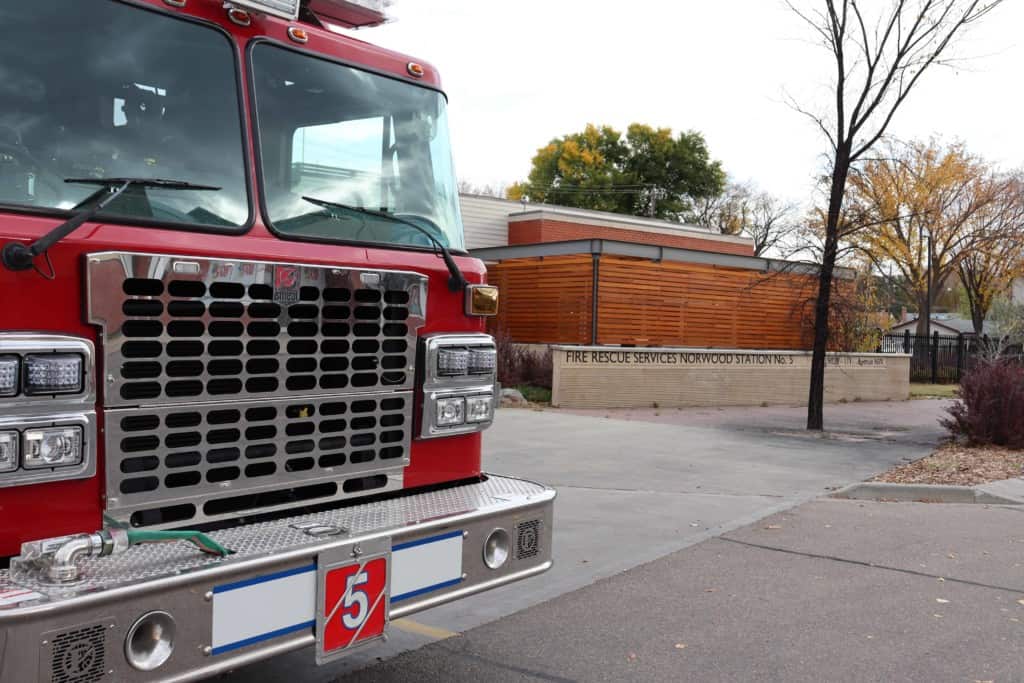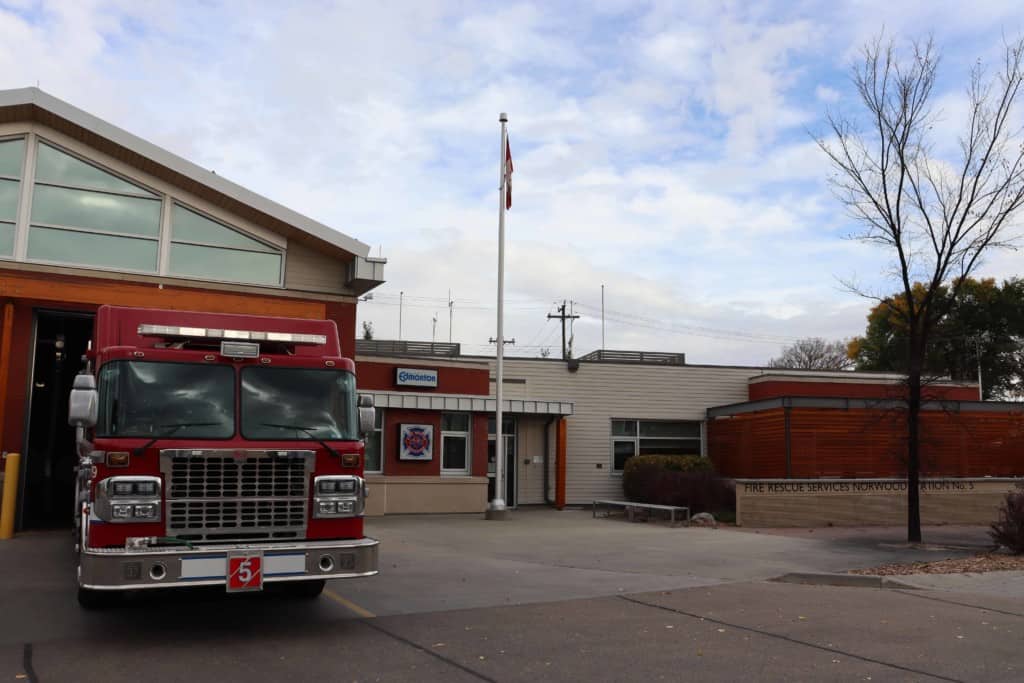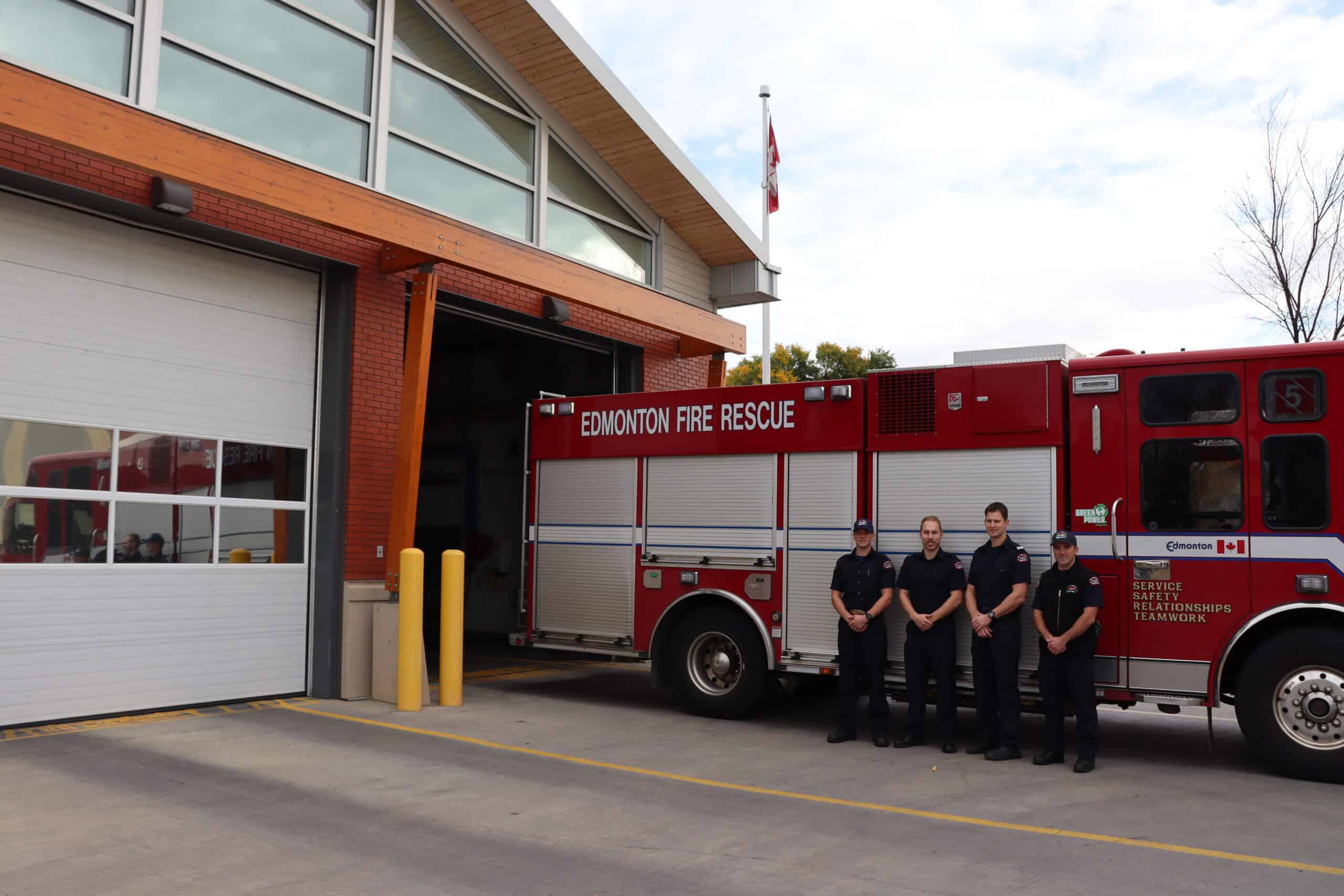Norwood fire station is here for the community
Fire truck sirens mean someone is being helped
Have there been more calls for Edmonton Fire Rescue Services in our area since COVID-19? Hearing the frequent sirens made me think so.
But I was in for a surprise. Norwood fire station #5, although the second busiest in the city, has not seen a rise. Total calls are “fairly consistent,” says Scott Macdonald, deputy chief of operations. This year’s numbers are similar to the past two years, totalling 3,445 to the end of September.
Fire-related calls come from the consolidated 911 dispatch service for police, fire, and ambulance. Calls related to medical events arrive from Emergency Medical Services of Alberta Health Services.

Given the reality of COVID-19, the number of medical events is steady at 58 per cent of calls. A typical year at Norwood station is just under 2,500 medical events. The number to the end of September was 2,013 medical events.
October is traditionally a month of open houses for 28 of Edmonton’s 30 fire stations. This year, of course, visitors are not allowed.
Mark Harvey, station captain, speaks for the staff of eight when he says, “Remember that all stations are there for the communities they serve when needed. In Norwood, we are still active in the community and able to be approached when we are out in our district. So, wave and say hi!”
“Morale in the whole of society is affected, not just life in a fire station,” says Macdonald. “But while we have certainly changed our interactions, our firefighters are still out in the community.”
All firefighters at Norwood are trained as medical first responders. Coupled with the necessity of wearing full PPE while on medical calls, the barriers between firefighters and the community have increased.

Adds Harvey, “As a station we are constantly out in the district we serve. Whether it’s responding to events, training, attending community functions, or getting groceries for the shift, it’s important that we make contact and build trust with the citizens we aim to help. We hope to provide a positive experience to all. From the young to the elderly in our community, we do our best to build relationships to grow the confidence our community has in us.”
Firefighters often arrive at a medical event before an ambulance. They bring equipment such as oxygen, automatic external defibrillators, and Naloxone among other supplies. “We always work hand-in-hand with ambulance personnel,” says Macdonald. “Arriving in the golden hour [the period of time after an injury where medical attention may prevent death], sometimes before an ambulance, we can save a life.”
When you hear fire truck sirens, says Harvey, “You need to realize that those who need help are getting the help they require.”
Respect protocol: if you are driving and see a fire truck coming, pull over to the side of the road and stop as it passes. If someone needs medical attention in a large group, stand back. This allows firefighters to help as quickly and efficiently as possible.
Fire safety starts with simple tasks such as installing smoke detectors and changing batteries in the spring and fall. Ensuring household members know how to respond to fire and medical emergencies is also an important practice that helps in stressful situations.
After speaking with firefighters, community members can watch out for one another and help those in need. If help is required, Norwood fire station is ready when called.
Featured Image: The pump crew outside Norwood fire station #5. | Photo courtesy of Edmonton Fire Rescue Services







